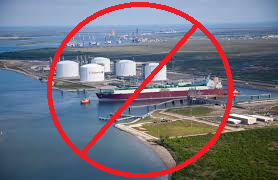The DCS Frac Sand Poster is Here
June 1, 2015PA DEP to Investigate Ten Mile Creek for Radioactivity
June 23, 2015By Weston W. Wilson, The Hill, June 15, 2015
Despite a press release from EPA proclaiming there is no widespread groundwater contamination due to fracking, EPA now says that their new study of the nation’s natural gas boom should not be seen as proof that hydraulic fracturing is being safely done.
“That is not the message of this report,” said EPA science adviser and deputy administrator Thomas A. Burke. “The message of this report is that we have identified vulnerabilities in the water system that are really important to know about and address to keep risks as low as possible.”
The oil and gas industry has claimed repeatedly that fracking is safe, alleging there’s never been a single case of groundwater contamination from fracking
People who live near fracking wells report a very different picture from devastating health impacts to contaminated drinking water and air pollution.
In 2010, Congress told EPA to study these claims. In 2011, EPA responded, announcing it would do a widespread investigation of the entire industry including the systemic release of toxic gases during fracking.
Under pressure from the industry, the EPA began severely limiting the scope of its investigation.
In 2012, EPA withdrew from any investigation of the air pathways of toxic gas release during fracking, despite hundreds of citizens living near wells reporting air pollution and a robust set of scientists confirming ill health consequences.
In 2013, EPA dropped its study of a marquee ground water contamination case in Dimock, Pennsylvania.
In 2013, EPA dropped its study of ground water contamination in Pavilion, Wyoming and Weatherford, Texas.
After retreating on measuring contamination in already fracked areas, EPA announced it would still conduct ‘prospective studies’ of new sites where baseline ground water data would be collected before fracking occurred. In 2014, EPA dropped all prospective studies.
Having systematically turned its back on groundwater data gathering and analysis, including the groundwater data it had already collected in Pennsylvania, Wyoming, and Texas which confirmed water contamination, EPA shamelessly released a draft report this month with the deeply deceptive headline, “no widespread systemic ground water contamination found.”
Actually, as EPA knows, hundreds of specific cases of ground water contamination have been documented. In 2012, Pennsylvania environmental officials found nearly 9 percent of fracked wells fail during their first year. EPA, itself, found that two-thirds of fracked wells have cement gaps with three percent of these faulty wells drilled through drinking water formations, creating a pathway for contamination.
Considering the connectivity of water, even a 3 percent failure rate from the 1.1 million fracked wells in the U.S. is numerically significant and creates what should be considered systemic risk. Indeed, Schlumberger, a leader in oil-field and fracking technology, says that all wells eventually leak.
Toxic gases released during fracking have been demonstrated to cause ill health, cancer, and birth defects. A health study in Colorado found a 30 percent increase in birth defects, including spina bifida and congenital heart failure, for women living within 10 miles of fracked wells. Of course, under pressure from the industry, EPA dropped its study of systemic health risks from toxic gases altogether in 2012.
The growing body of science says that fracking causes water contamination, air pollution and with high leakage rates of methane, a potent greenhouse gas, is a climate disaster. EPA’s clean power plan credits utilities for greenhouse gas reductions when they switch from coal to fracked gas. This credit is based on EPA’s calculation that the methane leak rate from fracking is 2 percent, and that the heat trapping character of methane is only 25 times greater than CO2 from coal. Both calculations are incorrect and therefore exaggerate the climate benefits of methane. Current information indicates methane is 86 times more heat trapping than CO2 over the short term, and the amount of methane leaked from fracked wells, according to field measurements by NOAA scientists, ranges from 4 percent to 18 percent.Unless the methane leak rate is reduced to less than one percent, the political promise that replacing coal with natural gas is better for climate protection is hollow, a hoax.
Still, there is a way out. As Stanford Prof. Mark Jacobson’s 2010 paper in Scientific American shows, we can run our world on 100 percent renewable energy. We don’t need natural gas. 100 percent renewable energy is not a pipe dream. It relies on a mix of energy conservation, solar, wind, and hydro primarily. And it can be done today with current technologies
This conversion will not only reduce health and climate risks, it will put money in the pockets of Americans. Additionally, a robust 100 percent renewable energy solution would reduce national security risks from climate change — the greatest threat to American national security according to the Pentagon.
Woodrow Wilson observed that if big business is to escape government regulation, it would have to strive to capture or own government. Industry’s pressure on EPA resulted in this pitifully limited investigation and the disingenuous press release. One is led to wonder, has Obama’s EPA been kidnapped by America’s fossil fuel hustlers?



